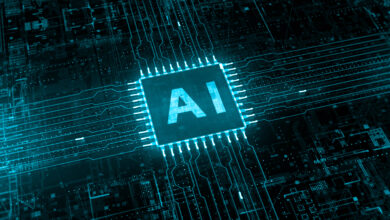Top 7 Generative AI legal software tools for legal professionals

 By now you’ve undoubtedly heard about Generative AI (GenAI), whether from a sensational news headline or a tech-savvy colleague. If you’re not familiar, it is a subset of artificial intelligence (AI) that can generate new content based on the data it has been trained on. Unlike traditional AI, which follows predefined rules and patterns, generative AI uses complex algorithms to create original outputs, including text, images, and even entire documents.
By now you’ve undoubtedly heard about Generative AI (GenAI), whether from a sensational news headline or a tech-savvy colleague. If you’re not familiar, it is a subset of artificial intelligence (AI) that can generate new content based on the data it has been trained on. Unlike traditional AI, which follows predefined rules and patterns, generative AI uses complex algorithms to create original outputs, including text, images, and even entire documents.
While still in its infancy, this technology is rapidly advancing and impacting how business gets done, and the legal field is no exception. There is a race to leverage this newfound efficiency driver and trusted legal technology companies are rapidly embedding GenAI into the tools that lawyers use every day. As it continues to evolve, legal professionals will find it increasingly integrated into their existing tools, and over time, especially as the accuracy of its output improves, you’ll likely wonder how you managed without it.
No matter what legal software tools your firm relies on, rest assured GenAI functionality will undoubtedly impact — and improve —- your workflows in the very near future. It’s being added to many legal platforms as we speak, with the following seven software categories at the top of the list.
GenAI is already available in many legal brief drafting and analysis tools, which assist in creating appellate briefs, memoranda of law, and other legal documents by enhancing writing quality and suggesting necessary edits. In addition to providing grammatical corrections, these tools also handle complex tasks like citation checking and comparing statements from briefs to other documents like deposition and trial transcripts, identifying inconsistencies or areas that need clarification.
GenAI is also improving how contracts are drafted and analyzed. These tools leverage GenAI to assist in drafting contracts by providing templates and suggesting clauses. During the review and analysis phase, these tools compare contracts to a vast database of similar documents, identifying missing or atypical clauses and recommending revisions.
GenAI-powered document automation tools streamline the creation and assembly of legal documents. GenAI assists with the rapid creation of legal document templates, streamlining the document creation process by reducing the need for repetitive data entry and ensuring consistency across documents. These tools can automatically pull information from law firm databases to populate documents and manage document creation workflows, from drafting to final review and approval.
Another area being impacted is eDiscovery. GenAI features built into this type of software simplify the identification, collection, preservation, processing, review, and analysis of relevant electronic documents. Another benefit is GenAI-enabled advanced search capabilities, which assist with keyword searches, tagging, and redaction. GenAi functionality can also rapidly analyze large volumes of data, identify patterns and provide insights potentially missed during manual review.
Litigation analytics are another key area being impacted by GenAI, offering easy access to data-driven insights that inform litigation strategies. This software streamlines the litigation process by rapidly providing detailed reports and necessary data points. GenAI-informed predictive analytics can forecast case outcomes, settlement amounts, and other critical data points based on historical court and firm data, empowering strategic, impactful decisions and ultimately leading to more favorable outcomes.
Legal research has been incorporating AI functionality for many years, and newly added GenAI tools provide instantaneous access to on-point results. Legal research powered by GenAi is more intuitive and user-friendly than traditional methods, allowing for more precise searches and relevant results. However, even the most trusted legal research providers haven’t solved the hallucination problem yet, so you’ll need to carefully review all output and supporting citations to ensure accuracy.
Last but not least, law practice management platforms, which support the business side of law firms, are rolling out GenAI enhancements in many different ways. When integrated with LPM systems, GenAI tools can aid in drafting client communications by changing tone, improving writing, and summarizing and translating documents. In the near future, GenAI functionality will also assist with quick access to and analysis of all law firm data. By providing instantaneous insight into case and client records, timekeeping and billing data, appointments, tasks, deadlines, and client communications, GenAI will enable lawyers to provide better client service while making more informed business and financial decisions.
There’s no better time than now to make educated decisions about adopting GenAI tools into your firm. GenAI’s integration into essential legal software tools is changing how legal work gets done, enhancing efficiency, accuracy, and strategic decision-making. The GenAI-powered law firm isn’t just a futuristic concept —- it’s a present reality in the legal profession. If you’re unwilling to pivot and adapt, rest assured, your competitors will, and they’ll reap the benefits.
Nicole Black is a Rochester, New York attorney, author, journalist, and the Head of SME and External Education at MyCase and LawPay, AffiniPay companies. She is the nationally-recognized author of “Cloud Computing for Lawyers” (2012) and co-authored “Social Media for Lawyers: The Next Frontier” (2010), both published by the American Bar Association. She also co-authors “Criminal Law in New York,” a Thomson Reuters treatise. She writes regular columns for Above the Law, ABA Journal, and The Daily Record, has authored hundreds of articles for other publications, and regularly speaks at conferences regarding the intersection of law and emerging technologies. She is an ABA Legal Rebel, and is listed on the Fastcase 50 and ABA LTRC Women in Legal Tech. She can be contacted at [email protected].



